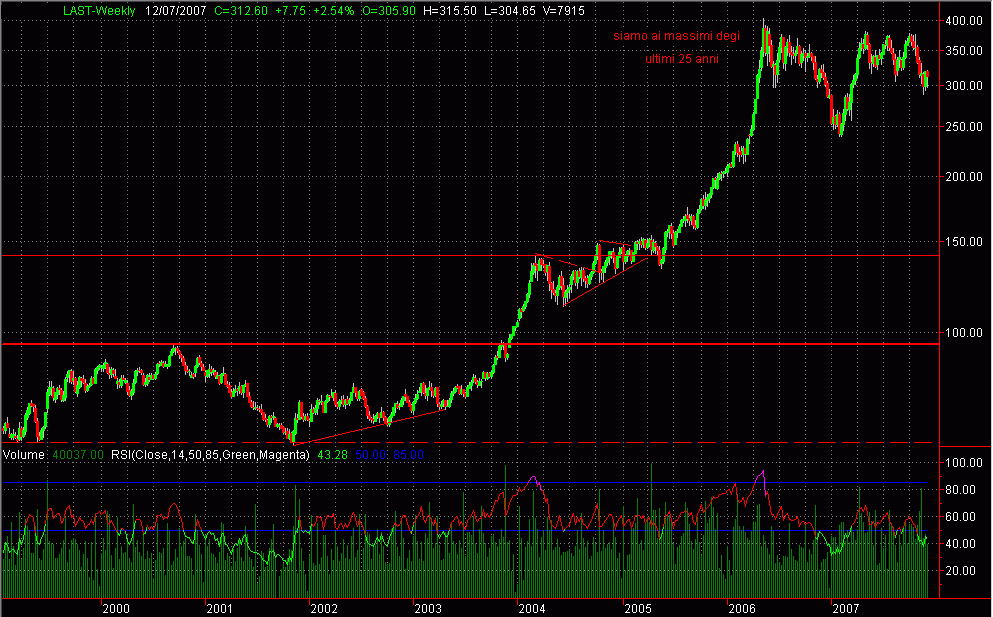| OUTLOOK
07: Copper Strike Potential May Be Less Than In 06
(02 apr 2007)
Labor-related supply disruptions to the copper market in 2007 may not be as pronounced
as in 2006, although there is still potential for high prices to trigger "go-slows"
or "wildcat" strikes, analysts said. Also, there is always a chance
of politically related disruptions, especially with many of the world's major
mines in developing countries. A series of events took copper to record-high prices
in late spring and kept them well above end-of-2005 levels since. These included
good industrial demand as well as investment interest in copper and other commodities.
Over the last year, there were also a number of strikes that cut into output,
plus some near strikes that supported prices. Some strikes in Mexico were over
union leadership issues. However, a more common theme was workers trying to get
a larger share of the pie as they saw copper hit record high prices. Now, multi-year
labor agreements appear to be in place at many of the world's
larger mining
operations or should be soon, which would mean less potential for disruptions
in 2007, analysts said. A labor deal in late summer ended a roughly one-month
strike at the Escondida mine in Chile, which accounts for an estimated 8% of global
output. A settlement with workers at Canada's Highland Valley was reached minutes
before an old contract expired Sept. 30. A major negotiation is occurring as 2006
winds down. While Chile's Codelco settled with some small unions, talks continue
with three large unions at it Norte
division, responsible for about 70% of Codelco's output. Still, if there is a
labor disruption, it presumably would occur and be resolved early in the year,
some said. "I think we will have some labor issues to deal with," said
Jon Bergtheil, global metals strategist with J.P. Morgan, about 2007. "But
we're definitely past the peak with the larger mines. "We shouldn't see anything
like the amount of disruptions that we saw in '06. Most of these contracts are
for longer than a year." He estimated that labor-related supply disruptions
to the copper market may be only "about quarter to a third" of what
occurred in 2006. When talks do occur, union demands may not be as great as they
might have been if copper prices had not fallen back from last spring's highs,
said Bergtheil. "I don't expect the same level of labor issues next year
as this year," said Robin Bhar, base-metals strategist with UBS. "I
don't think there is the same number of contract renewals next year as there has
been this year." More importantly, not as much capacity will be at risk in
the key producing nation of Chile. "You have the Codelco Norte division negotiating
at the end of the year and early next year, but that will be it," said Bhar.
George Leaming, director of the Western Economic Analysis Center, said there appears
to be less potential for compensation-related strikes in 2007 than in 2006. However,
he cautioned that the labor outlook is nevertheless "a cloudy picture"
since often political issues - both government and union leadership - dictate
whether workers strike in other countries.
"The United States is pretty
clear," he said. "There is not likely to be (major strikes). "But
in Chile, Mexico and even Indonesia, the situations are highly political. They
can come right out of left field or right field without anybody seeing them coming....It's
subject to political winds, which can blow one way or the other,
or not at
all, at any given time." In particular, he said, it remains to be seen how
the opposition will respond
to Mexican President Felipe Calderon, who was
narrowly elected in July and inaugurated Dec. 1, Leaming said there is little
likelihood of major strikes in the southwestern U.S., since Phelps Dodge and BHP
operations are non-union. "I think Asarco has pretty well got its labor troubles
behind it," said Leaming. "They are more wrestling with the bankruptcy
court." A lengthy strike occurred against Asarco in 2005, before the expired
agreement was essentially extended to the end of 2006 on the same terms as the
old one.
Leaming said he anticipates a similar outcome this time around. "It
seems to me that would be the logical thing to do -- just keep it going,"
he said. "Basically, that's all they did before after a five-month strike."
Some
Strike Potential Does Exist As Copper Prices Remain High
Still,
analysts say there is some potential for strikes, even compensation-related ones.
"You could have unforeseen go-slows and wildcat strikes because workers demand
more of the share of the revenue that these companies are going to be getting
from a still-high copper price," Bhar said. "It's one of the things
you can't forecast."
Man Financial analyst Edward Meir said labor talks
that do occur potentially could be "pretty contentious," particularly
since copper prices remain historically high.
"This will embolden the
unions to stick to their guns," he said. "As a case in point, we haven't
seen anything come out of the Codelco Norte talks yet. Everybody had thought that
would wrap up quickly, but they're still talking." There is even potential
for workers in some parts of the world to seek better terms even when they already
have a negotiated contract, said Bhar. "It could also be, as we've seen this
year in Zambia at some of the copper facilities there, some protesters going on
strike demanding a one-off (one-time) copper bonus," Bhar said. Unions could
have good clout if they undertake go-slow strategies or stage wildcat strikes,
he said. "They have a lot of power, because by going slow or having wildcat
strikes, they can see the company lose a lot of production. It might only be a
few days, but at $7,000 to $8,000 a ton, that will be a lot of dollars that will
be lost (for mining companies)."
|
